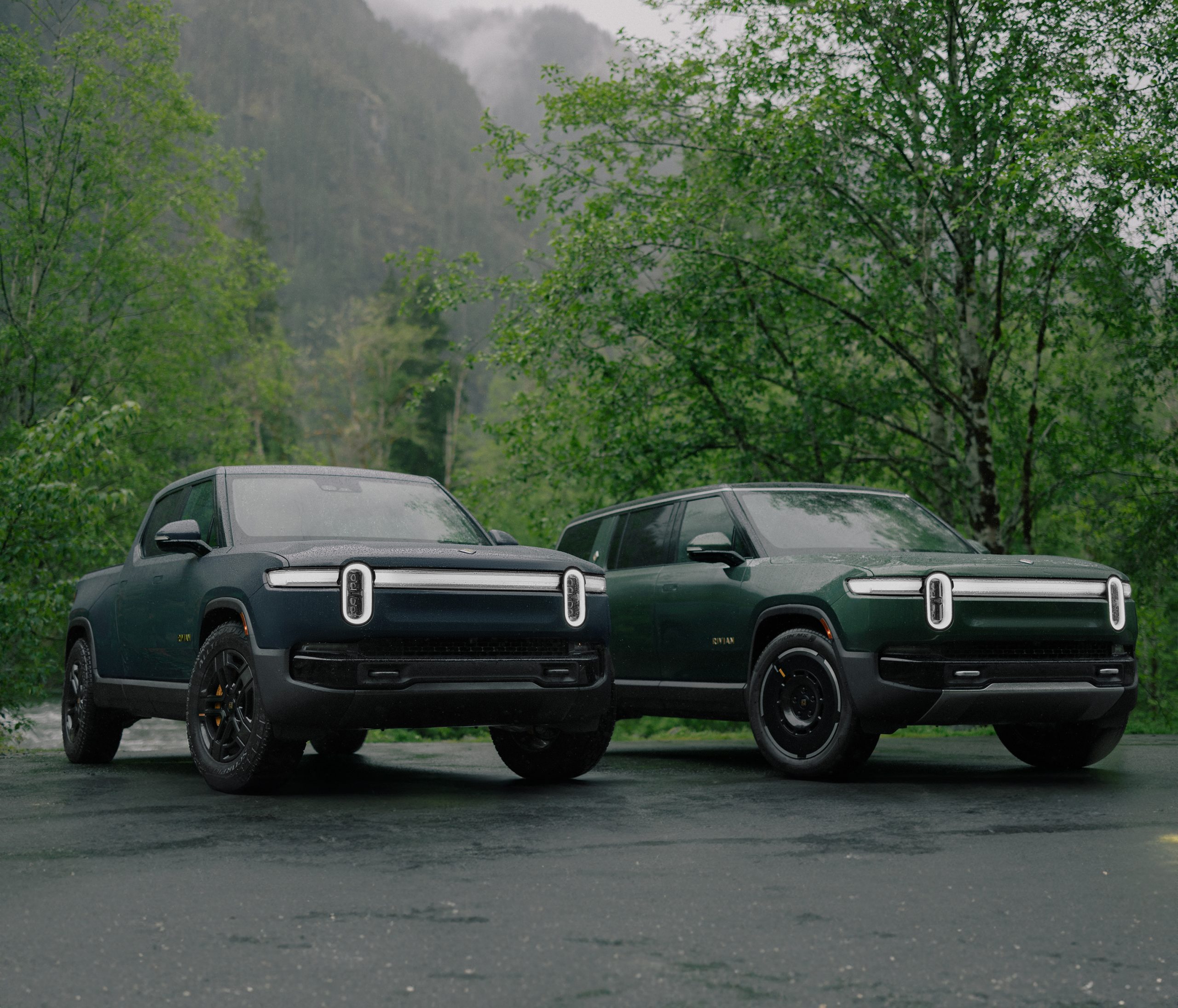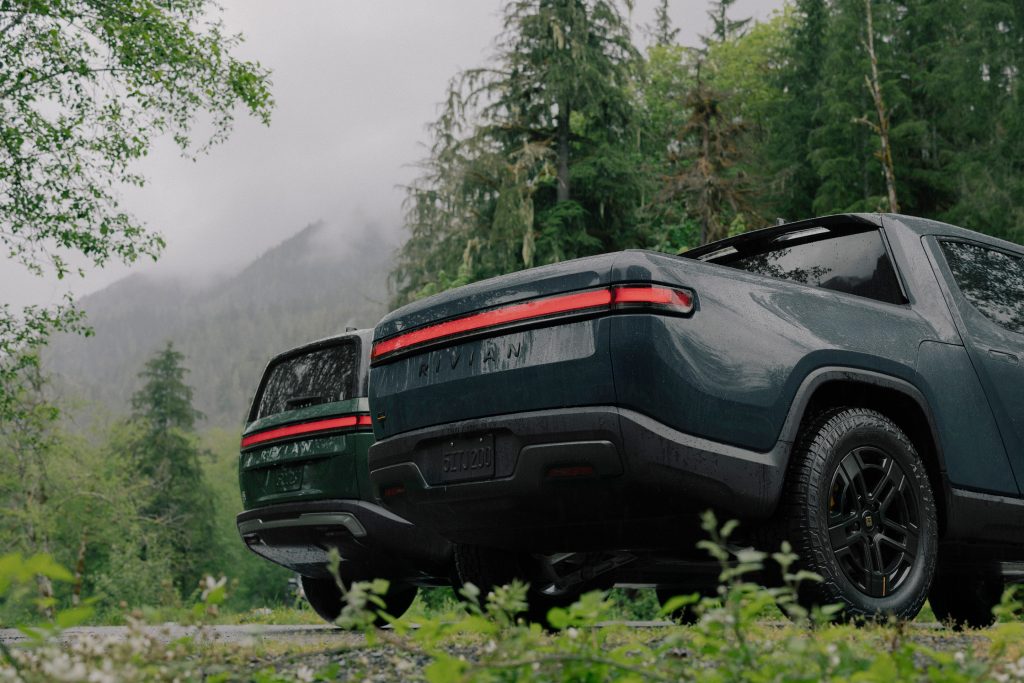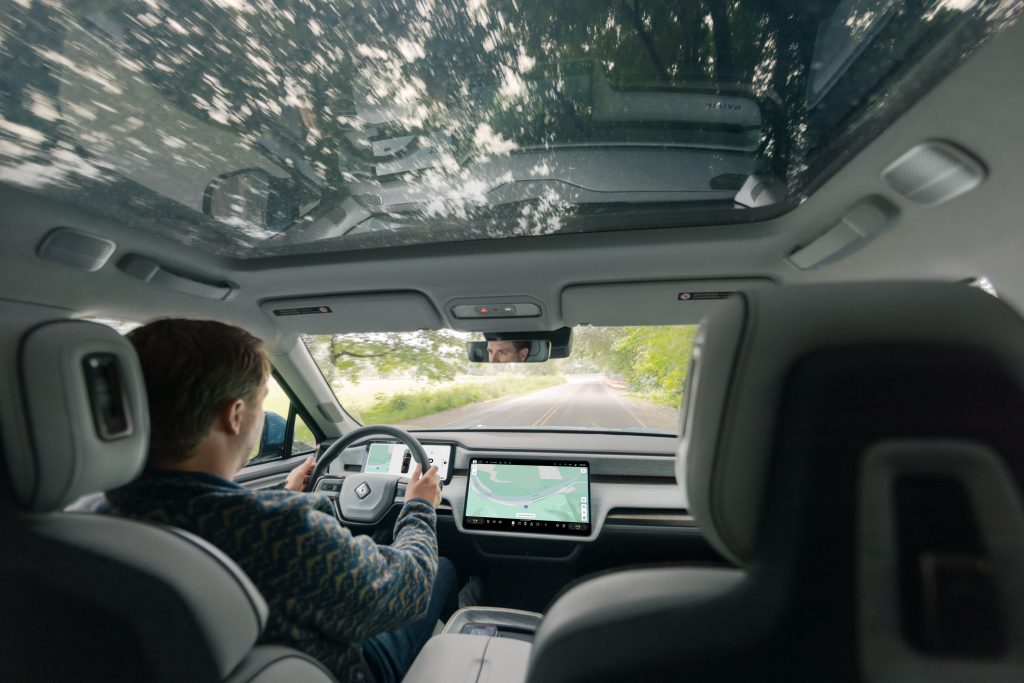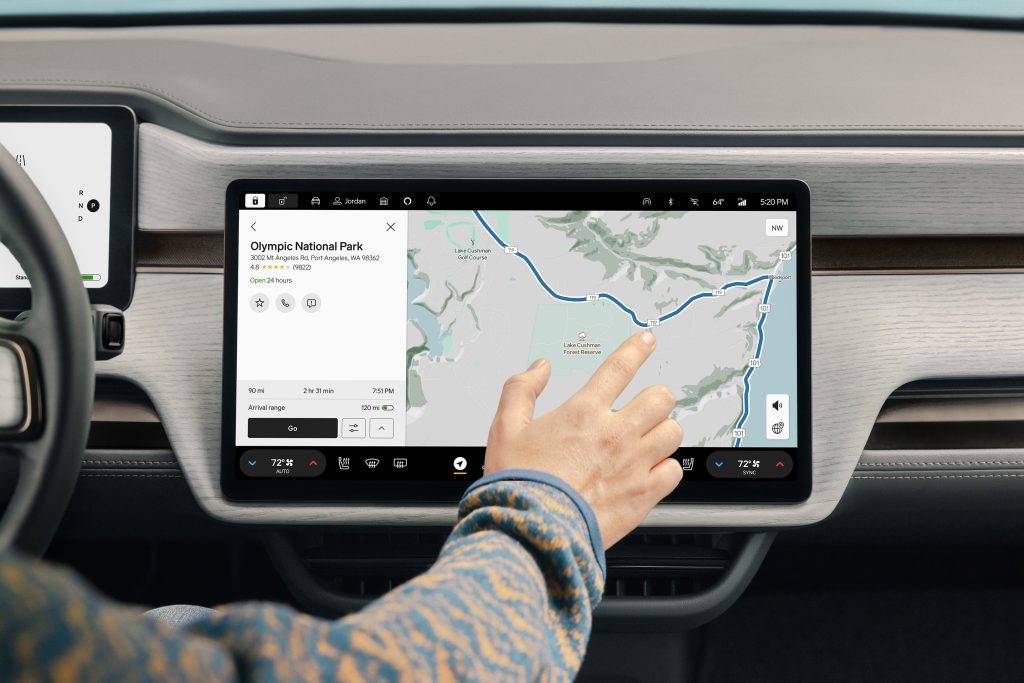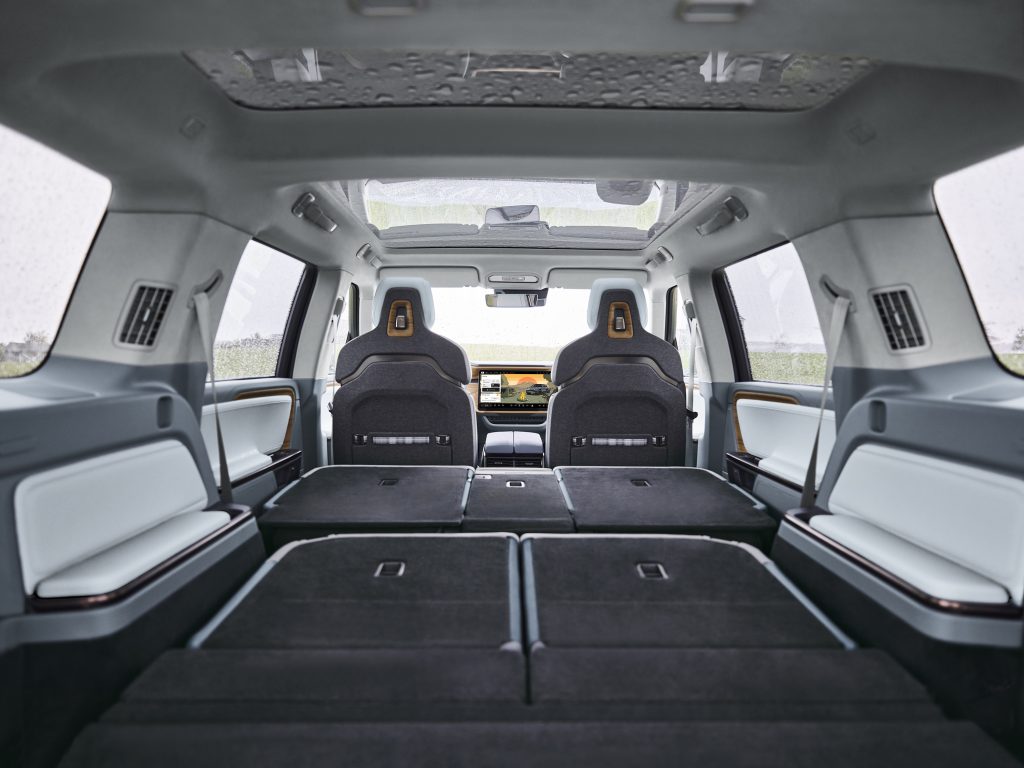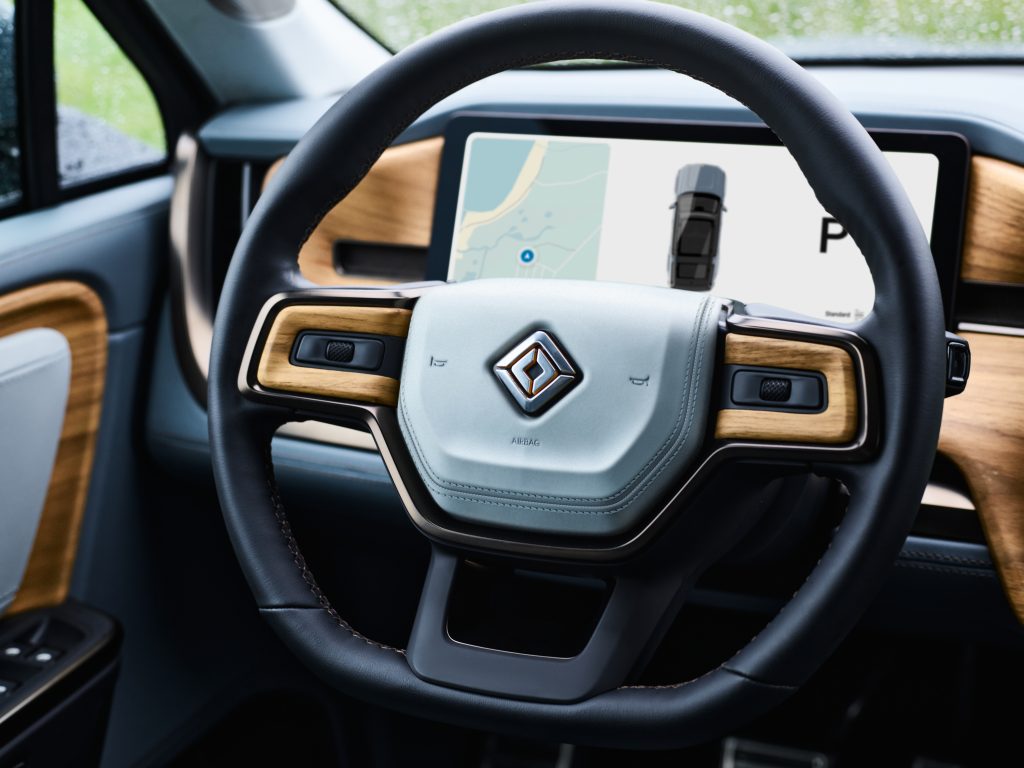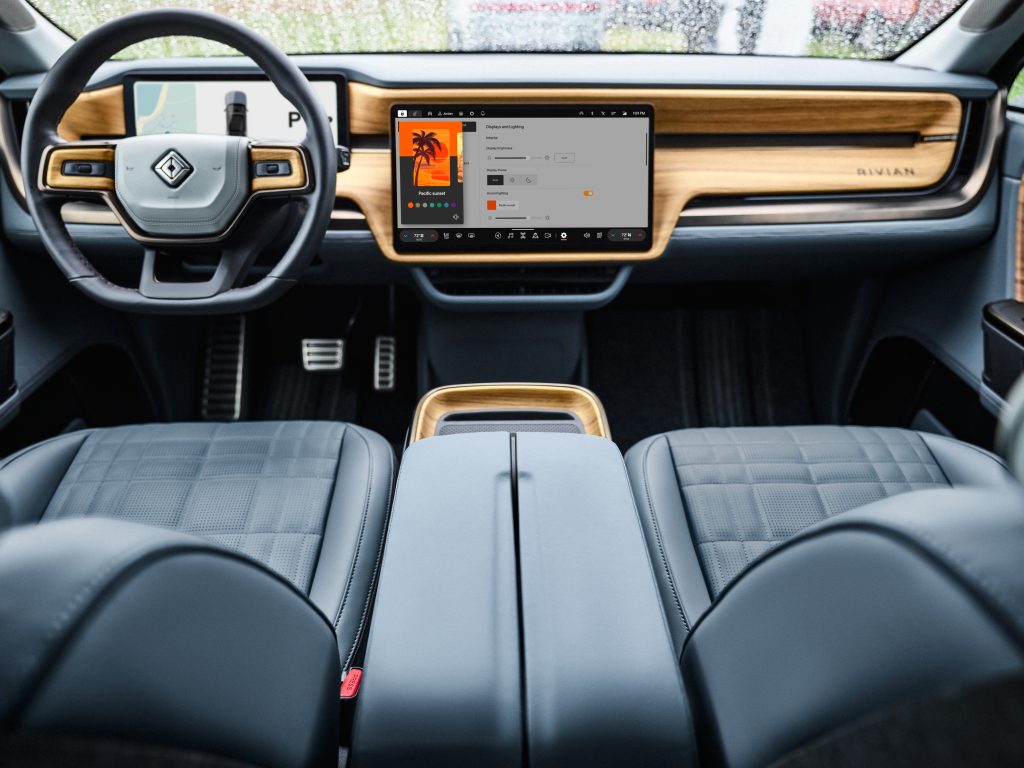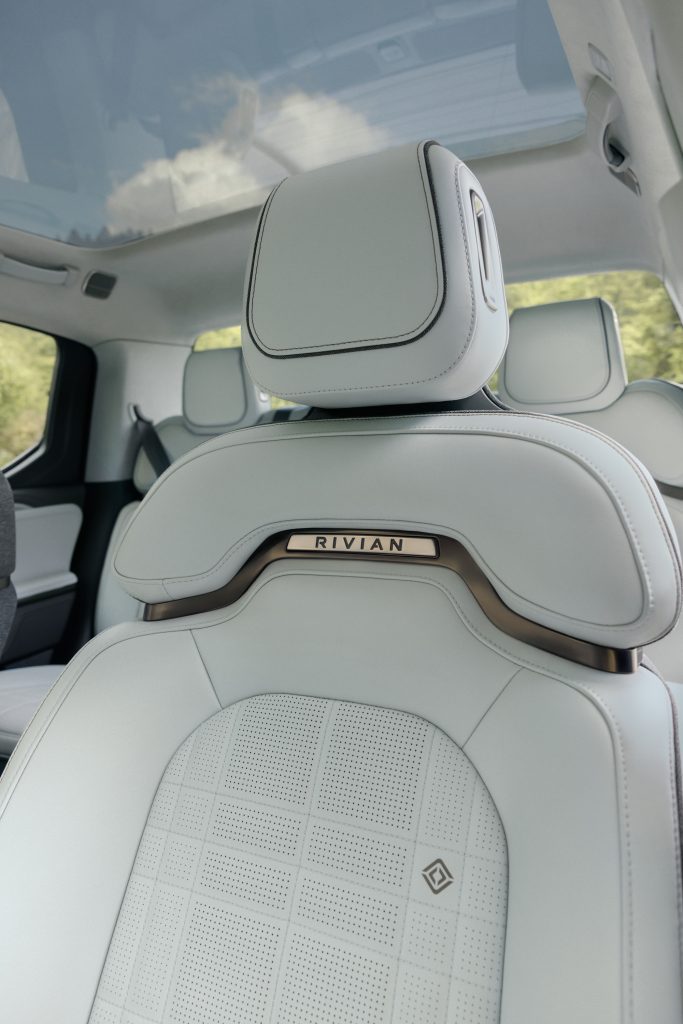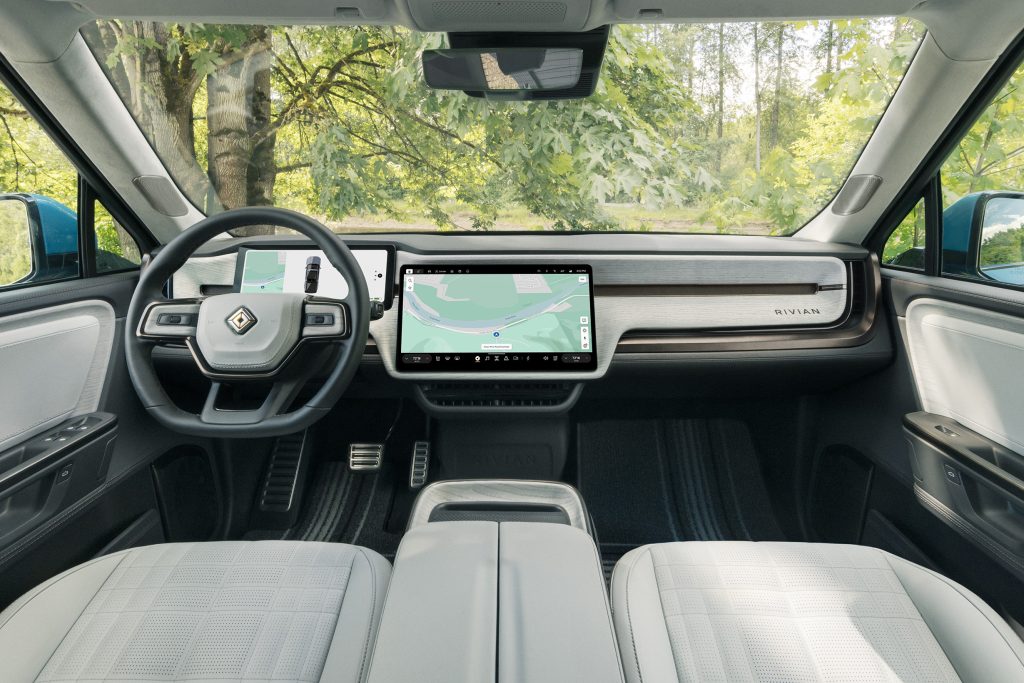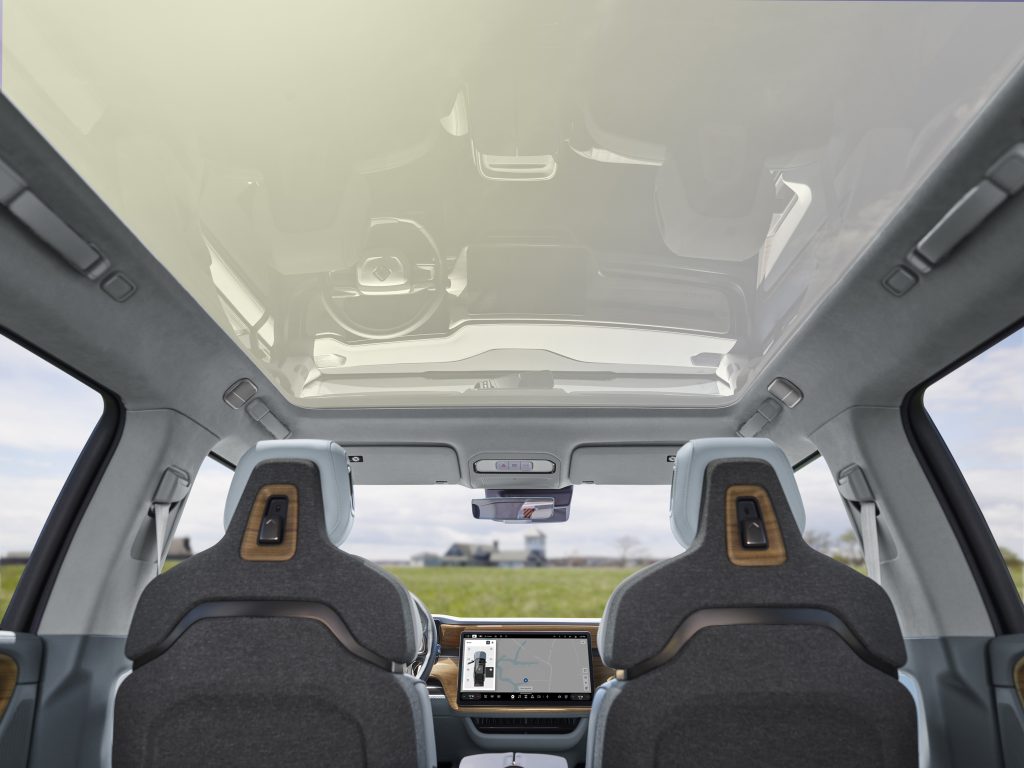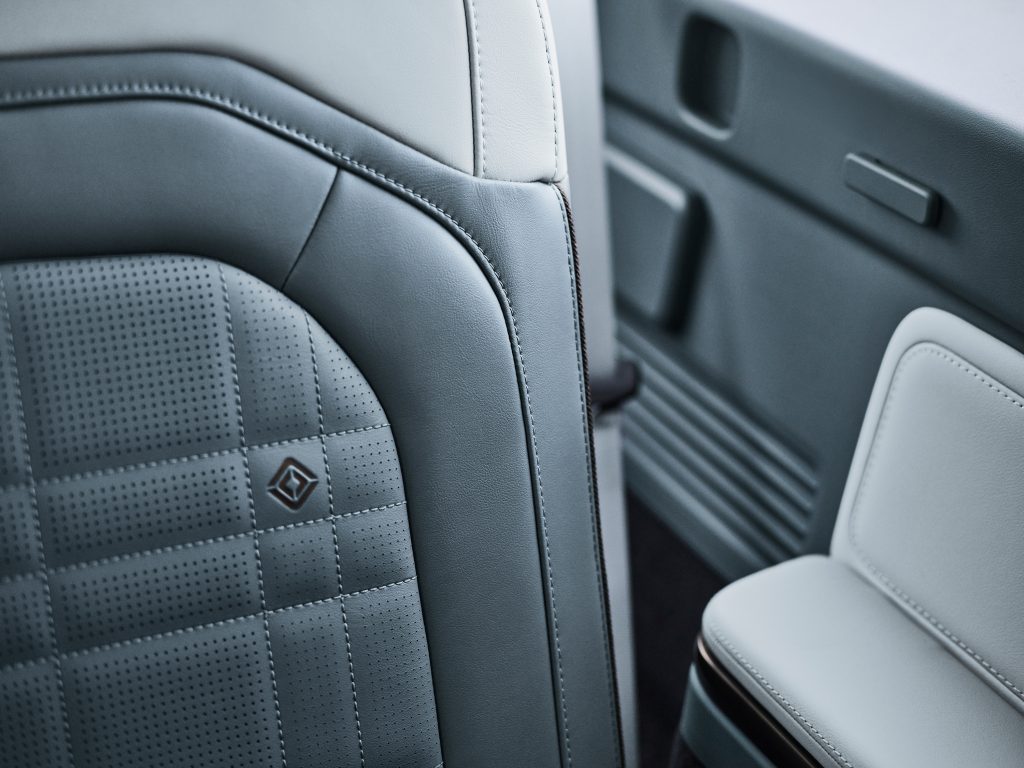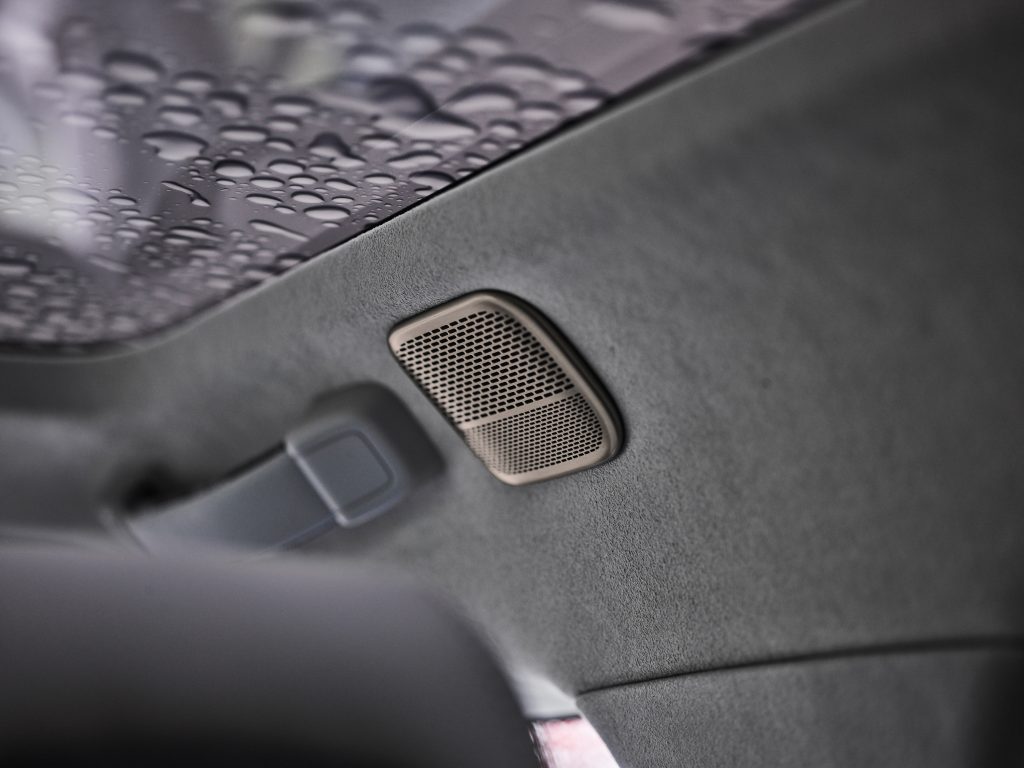Rivian has officially launched the next-generation R1S and R1T, new versions of the company’s flagship electric vehicles.
“We continue to evolve our flagship R1 vehicles,” CEO RJ Scaringe said, “offering quality and performance without compromise. Our revamped R1S and R1T push the technical boundaries further, creating our most capable products to date.”
Rivian aimed to refine and improve performance, design, range, and overall ownership experience with the new R1T and R1S, bringing everything from new drivetrains to new interior aesthetics to the EVs without compromising any of the features that owners loved about the first generation.
Additionally, Rivian is rolling out its new Autonomy Platform, which was developed in-house and utilizes eleven internally developed cameras along with five radars that perform over 250 trillion operations per second.
“For most owners, their R1 Gen 2 will be the most powerful computer that they own,” VP of Autonomy and AI for Rivian, James Philbin, said.
Let’s dive into some of the improvements Rivian has employed:
Performance
Rivian’s next-gen R1 platform now features more power, performance, and range, all stemming from a new drive unit offered in its Tri and Quad-Motor configurations. Dual-Motor has not gone anywhere either, and still offers great performance metrics:
- Dual-Motor Our Dual-Motor delivers incredible all-wheel drive capability along with 665 horsepower and 0–60 mph in as quick as 3.4 seconds for the Performance variant
- Tri-Motor Our all-new 850 horsepower Tri-Motor packs two motors in the rear and one in front for a blend of exceptional power and range. The Tri-Motor R1T delivers 0–60 mph in 2.9 seconds while offering an estimated range of 380 miles. In Conserve Mode, the estimated range is up to 410 miles.
- Quad-Motor For peak adventure, our new 1,025 horsepower Quad-Motor delivers 0–60 mph in less than 2.5 seconds in R1T — and ¼ mile in 10.5 seconds — with a staggering 1,198 lb-ft of torque when using Launch Mode. 60–80 mph acceleration is 1.5 seconds, with incredible torque control at each wheel for superior on-road performance and off-road capability.

Ride and Handling
Rivian also focused on the ride and handling experience in the R1 lineup for this second-generation vehicle launch. The suspension system has been fully re-engineered, improving on what customers called a “sport-tuned feel” in the first-generation EVs. Rivian decided to go with a “smoother” ride for the new R1T and R1S, which is adjustable to ensure comfortable on and off-road capabilities.
Vehicle equipment has also been refined. Rivian developed new wheels and fitted them with new tires, including a redesigned 22″ aerodynamic wheel design and Pirelli-developed tires to increase range.
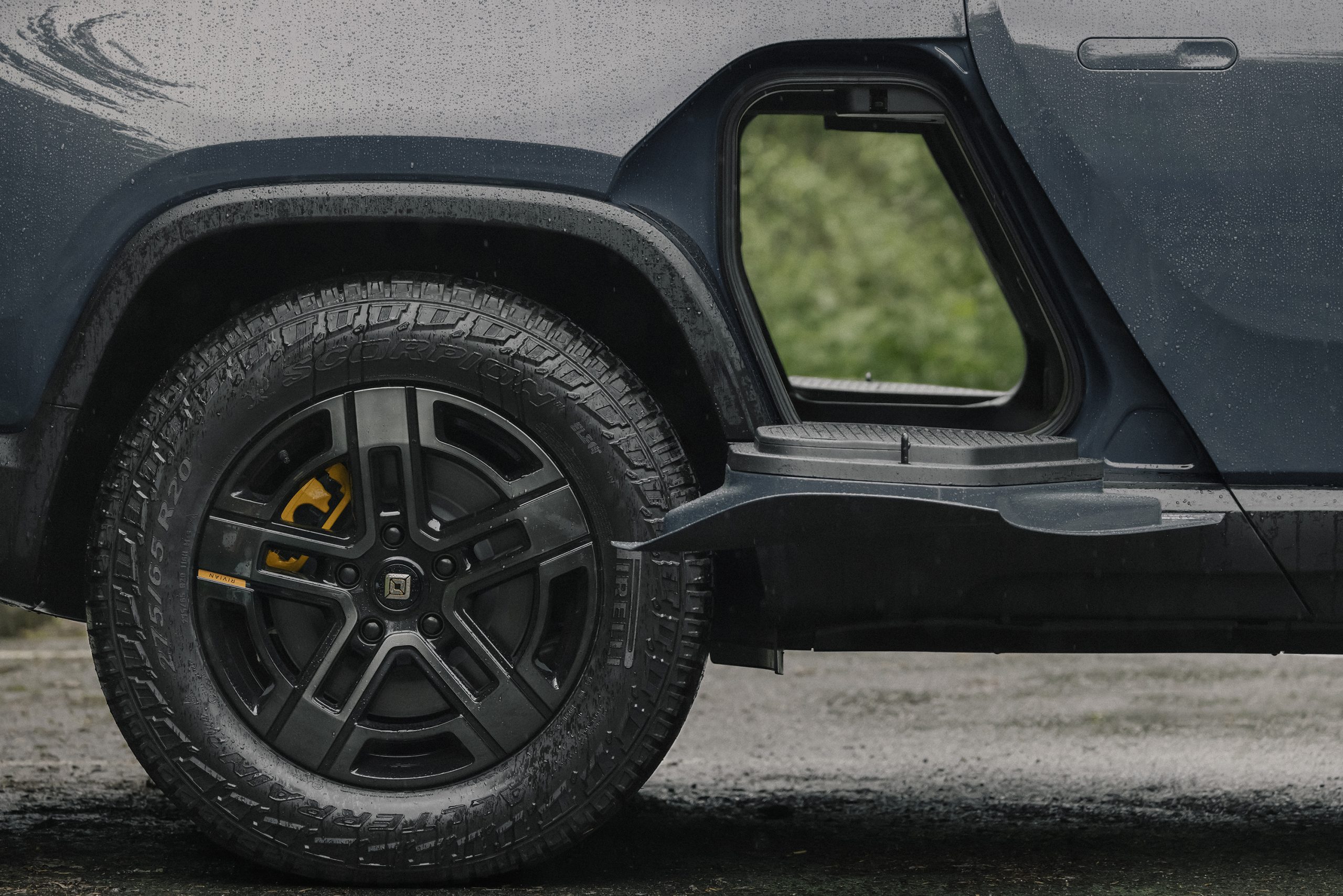
For Performance, Rivian is going with an Ultra-High-Performance Michelin tire that will be available on the Quad-Motor configurations. Additionally, for a “well-rounded” experience, Goodyear has a 20″ ADV tire that offers “balanced all-around capability with the rolling-resistance of an all-season,” and comes standard.
Range and Batteries
Three battery pack sizes will still be offered by Rivian, but the Max and Large batteries have been completely re-engineered and offer ranges of 420 and 330 miles, respectively, based on estimations. They will continue to use 2170 cylindrical cells, and the pack enclosure features a “large high-pressure de-casting” system to simplify manufacturing and reduce mass.
The new Standard Pack will feature lithium-iron-phosphate (LFP) chemistry and provide an EPA-estimated 270-mile range.
140 miles of range can be regained in as little as 20 minutes and are compatible with all major public high-speed charging networks. This includes the Rivian Adventure Network and the Tesla Supercharger Network.
Design and Experience
Rivian honed in on new features with the R1T and R1S and also added two new premium interiors, new exterior paint options, and new darkout trim options.
These are in addition to the new wheel and tire choices, and now vehicles come with a new electronically tinted glass roof, new in-cabin storage, interior lighting themes, new digital interfaces, and new cell shading designs for the different drive modes. It has also improved on the wireless charger.
Surround Sound Audio with Dolby Atmos is available with Rivian Premium Audio.
Refined Electrical Architecture and Compute Platform
The second-gen R1 features new electrical architecture and a new compute platform that was developed in-house by the Rivian hardware and software teams.
“While the exterior of the R1 looks similar, the electrical system is completely redone, providing a significant increase in features as well as a dramatic increase in sensing and compute capability,” Rivian’s SVP of Electrical Hardware, Vidya Rajagopalan, said.
Trimming the ECU count from 17 in the first-gen to just 7 in the second-gen, the “massive simplification” was part of a shift in zonal architecture. Infotainment, autonomy, and vehicle access, as well as battery management, all have their own ECUs. Every other vehicle function is controlled by the remaining three.
Rivian Autonomy Platform
The Rivian Autonomy Platform utilizes “11 internally developed cameras and five radars performing over 250 trillion operations per second, an industry-leading level of compute power.”
The cameras are high-resolution and now include 4K HDR units, which have 360-degree visibility and can see three-times farther than the previous system, as well as 10 seconds ahead at highway speeds.
These are the most camera megapixels of any EV in North America and enable improved dynamic range and clear vision in high-contrast scenarios, like tunnel entrances and exits.
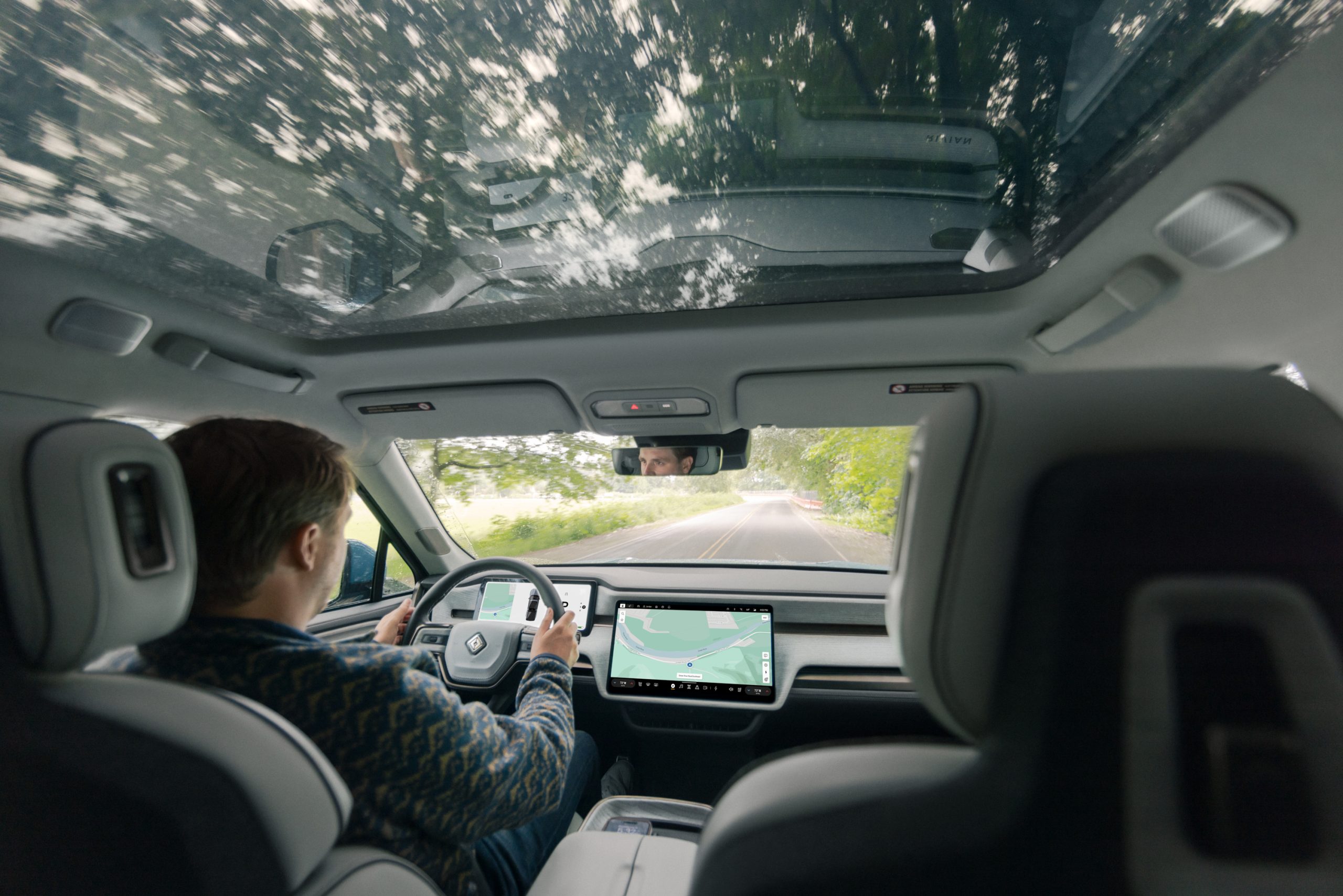
Rivian is also utilizing a cabin-facing camera in the rearview mirror to detect both driver fatigue and distraction when operating in Enhance Highway Assist mode, which will roll out later this year.
The Autonomy Compute Module is backed up by dual NVIDIA DRIVE Orin processors, delivering 10 times more compute performance than the previous system.
Pricing
The new R1S will start at $75,900 and the R1T at $69,900. Dual-Motor configurations can be ordered today and are available immediately. Tri-Max is expected to be launched in the late Summer, while Quad Max will come shortly after.
I’d love to hear from you! If you have any comments, concerns, or questions, please email me at joey@teslarati.com. You can also reach me on Twitter @KlenderJoey, or if you have news tips, you can email us at tips@teslarati.com.

News
Elon Musk’s Grokipedia surges to 5.6M articles, almost 79% of English Wikipedia
The explosive growth marks a major milestone for the AI-powered online encyclopedia, which was launched by Elon Musk’s xAI just months ago.

Elon Musk’s Grokipedia has grown to an impressive 5,615,201 articles as of today, closing in on 79% of the English Wikipedia’s current total of 7,119,376 articles.
The explosive growth marks a major milestone for the AI-powered online encyclopedia, which was launched by Elon Musk’s xAI just months ago. Needless to say, it would only be a matter of time before Grokipedia exceeds English Wikipedia in sheer volume.
Grokipedia’s rapid growth
xAI’s vision for Grokipedia emphasizes neutrality, while Grok’s reasoning capabilities allow for fast drafting and fact-checking. When Elon Musk announced the initiative in late September 2025, he noted that Grokipedia would be an improvement to Wikipedia because it would be designed to avoid bias.
At the time, Musk noted that Grokipedia “is a necessary step towards the xAI goal of understanding the Universe.”
Grokipedia was launched in late October, and while xAI was careful to list it only as Version 0.1 at the time, the online encyclopedia immediately earned praise. Wikipedia co-founder Larry Sanger highlighted the project’s innovative approach, noting how it leverages AI to fill knowledge gaps and enable rapid updates. Netizens also observed how Grokipedia tends to present articles in a more objective manner compared to Wikipedia, which is edited by humans.
Elon Musk’s ambitious plans
With 5,615,201 total articles, Grokipedia has now grown to almost 79% of English Wikipedia’s article base. This is incredibly quick, though Grokipedia remains text-only for now. xAI, for its part, has now updated the online encyclopedia’s iteration to v0.2.
Elon Musk has shared bold ideas for Grokipedia, including sending a record of the entire knowledge base to space as part of xAI’s mission to preserve and expand human understanding. At some point, Musk stated that Grokipedia will be renamed to Encyclopedia Galactica, and it will be sent to the cosmos.
“When Grokipedia is good enough (long way to go), we will change the name to Encyclopedia Galactica. It will be an open source distillation of all knowledge, including audio, images and video. Join xAI to help build the sci-fi version of the Library of Alexandria!” Musk wrote, adding in a later post that “Copies will be etched in stone and sent to the Moon, Mars and beyond. This time, it will not be lost.”
News
Tesla Model 3 becomes Netherlands’ best-selling used EV in 2025
More than one in ten second-hand electric cars sold in the country last year was a Tesla Model 3.

The Tesla Model 3 became the most popular used electric car in the Netherlands in 2025, cementing its dominance well beyond the country’s new-car market.
After years at the top of Dutch EV sales charts, the Model 3 now leads the country’s second-hand EV market by a wide margin, as record used-car purchases pushed electric vehicles further into the mainstream.
Model 3 takes a commanding lead
The Netherlands recorded more than 2.1 million used car sales last year, the highest level on record. Of those, roughly 4.8%, or about 102,000 vehicles, were electric. Within that growing segment, the Tesla Model 3 stood far ahead of its competitors.
In 2025 alone, 11,338 used Model 3s changed hands, giving the car an 11.1% share of the country’s entire used EV market. That means more than one in ten second-hand electric cars sold in the country last year was a Tesla Model 3, Auto Week Netherlands reported. The scale of its lead is striking: the gap between the Model 3 and the second-place finisher, the Volkswagen ID3, is more than 6,700 vehicles.
Rivals trail as residual values shape rankings
The Volkswagen ID.3 ranked a distant second, with 4,595 used units sold and a 4.5% market share. Close behind was the Audi e-tron, which placed third with 4,236 registrations. As noted by Auto Week Netherlands, relatively low residual values likely boosted the e-tron’s appeal in the used market, despite its higher original price.
Other strong performers included the Kia Niro, the Tesla Model Y, and the Hyundai Kona, highlighting continued demand for compact and midsize electric vehicles with proven range and reliability. No other model, however, came close to matching the Model 3’s scale or market presence.
News
Tesla Model Y Standard Long Range RWD launches in Europe
The update was announced by Tesla Europe & Middle East in a post on its official social media account on X.

Tesla has expanded the Model Y lineup in Europe with the introduction of the Standard Long Range RWD variant, which offers an impressive 657 km of WLTP range.
The update was announced by Tesla Europe & Middle East in a post on its official social media account on X.
Model Y Standard Long Range RWD Details
Tesla Europe & Middle East highlighted some of the Model Y Standard Long Range RWD’s most notable specs, from its 657 km of WLTP range to its 2,118 liters of cargo volume. More importantly, Tesla also noted that the newly released variant only consumes 12.7 kWh per 100 km, making it the most efficient Model Y to date.
The Model Y Standard provides a lower entry point for consumers who wish to enter the Tesla ecosystem at the lowest possible price. While the Model 3 Standard is still more affordable, some consumers might prefer the Model Y Standard due to its larger size and crossover form factor. The fact that the Model Y Standard is equipped with Tesla’s AI4 computer also makes it ready for FSD’s eventual rollout to the region.
Top Gear’s Model Y Standard review
Top Gear‘s recent review of the Tesla Model Y Standard highlighted some of the vehicle’s most notable features, such as its impressive real-world range, stellar infotainment system, and spacious interior. As per the publication, the Model Y Standard still retains a lot of what makes Tesla’s vehicles well-rounded, even if it’s been equipped with a simplified interior.
Top Gear compared the Model Y Standard to its rivals in the same segment. “The introduction of the Standard trim brings the Model Y in line with the entry price of most of its closest competition. In fact, it’s actually cheaper than a Peugeot e-3008 and costs £5k less than an entry-level Audi Q4 e-tron. It also makes the Ford Mustang Mach-E look a little short with its higher entry price and worse range,” the publication wrote.
